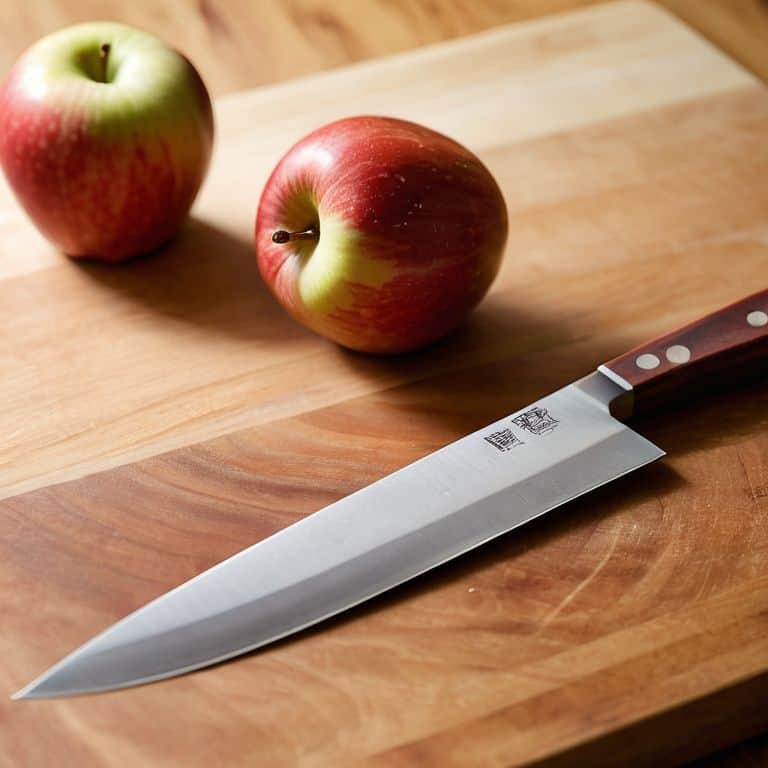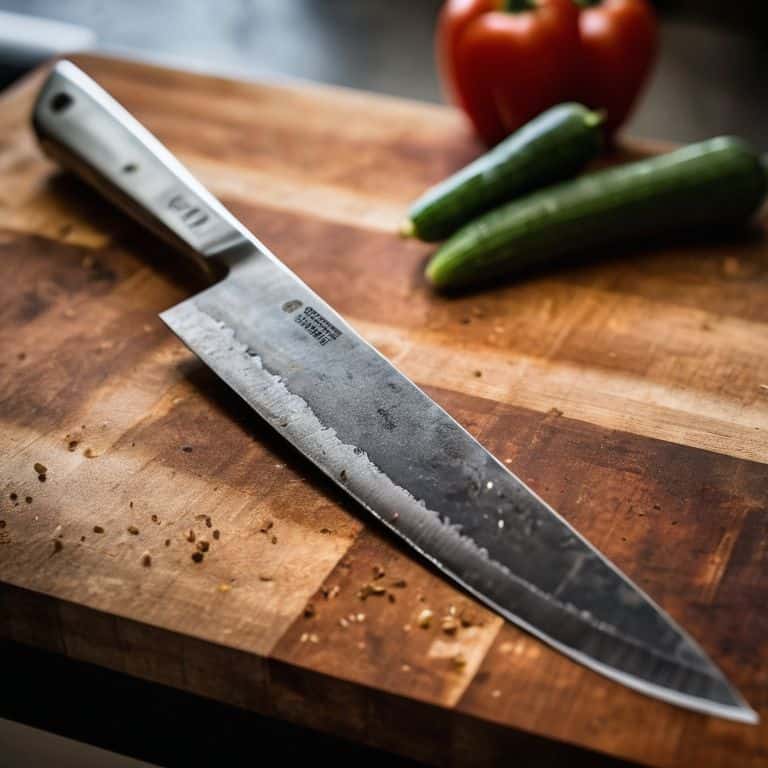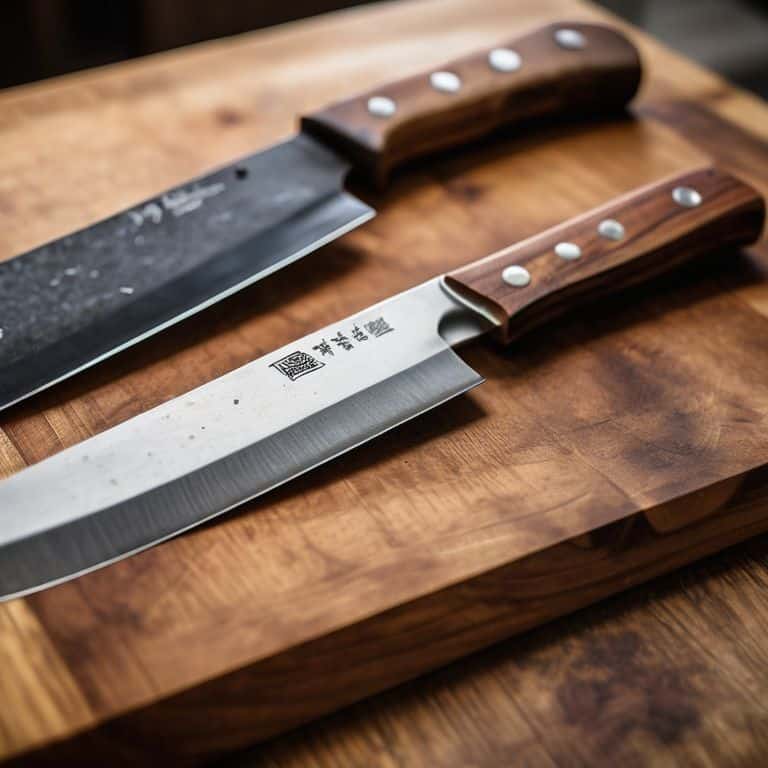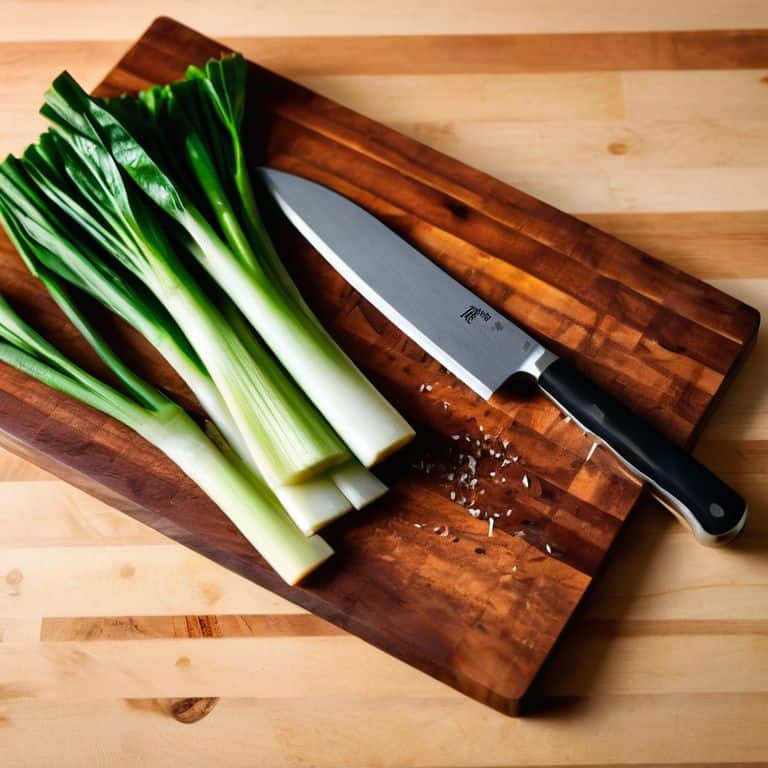As I stood in my kitchen, staring down at the sleek Japanese knife I’d just unwrapped, I couldn’t help but think of the endless debates I’d read online about the merits of Japanese vs German knives. It’s a question that has plagued home cooks and professional chefs alike: which type of knife is truly worth the investment? A guide to Japanese vs German knives is just what I needed, but most of what I found was either overly technical or shamelessly promotional. I wanted a no-nonsense guide, one that would cut through the hype and give me a real understanding of what sets these two knife-making traditions apart.
In this article, I’ll be sharing my own hands-on experience with both Japanese and German knives, highlighting the key differences that actually matter. I’ll tell you which ones are worth the hype, and which ones are just fancy marketing. My goal is to provide you with a clear, unbiased understanding of what to look for in a high-quality knife, whether you’re a seasoned pro or just starting to build your collection. By the end of this guide, you’ll know exactly what to look for in a guide to Japanese vs German knives, and you’ll be equipped to make an informed decision that will elevate your cooking game.
Table of Contents
Japanese Knives

Japanese knives are defined by their unique blend of traditional craftsmanship and cutting-edge technology, with a core mechanism that typically features a single-bevel edge and a curved or straight blade design, offering a main selling point of exceptional sharpness. The Japanese knife’s emphasis on _precision_ and _minimalism_ has led to the development of various styles, each with its own distinct characteristics, such as the popular Gyuto and Santoku knives, which are highly prized for their ability to make _clean cuts_.
For me, the appeal of Japanese knives lies in their ability to elevate the cooking experience, transforming the mundane task of chopping vegetables into a _meditative ritual_. When I’m in the kitchen, I want a knife that’s an extension of my hand, gliding effortlessly through even the toughest ingredients, and Japanese knives consistently deliver on this promise, making them a staple in my own kitchen and a must-have for any serious home cook or professional chef seeking to add a touch of _culinary elegance_ to their craft.
German Knives

German knives, on the other hand, are renowned for their durability and versatility, with a core mechanism that often features a forged or stamped construction and a straight or curved edge, boasting a main selling point of long-lasting performance. The German knife’s focus on _robustness_ and _practicality_ has resulted in the creation of iconic designs like the classic Chef’s knife, which is highly regarded for its ability to withstand _heavy use_ and maintain its edge over time.
In my experience, German knives are all about _substance over style_, offering a no-nonsense approach to cooking that’s hard to beat, especially when it comes to tasks like chopping, slicing, and mincing, where their _heft_ and _balance_ make all the difference, allowing for _smooth, efficient cuts_ that make quick work of even the most daunting ingredients, and their rugged construction ensures they’ll remain a trusted companion in the kitchen for years to come, a true _workhorse_ for any serious cook.
Head-to-Head Comparison: Japanese vs German Knives
| Feature | Japanese Knives | German Knives |
|---|---|---|
| Price | Generally higher | Generally lower |
| Key Feature | Sharpness and lightness | Durability and robustness |
| Best For | Delicate cuts and sushi preparation | Heavy-duty chopping and meat preparation |
| Material | High-carbon stainless steel | High-carbon steel or stainless steel |
| Edge Retention | Excellent | Very good |
| Sharpening Difficulty | More difficult | Less difficult |
| Aesthetics | Often more decorative | Often more minimalist |
A Guide to Japanese vs German Knives

When it comes to knife sharpness, the difference between Japanese and German knives is a crucial consideration. This criterion matters because a sharp knife is not only more efficient but also safer, as it requires less pressure and is less likely to slip and cause accidents.
In a head-to-head analysis, Japanese knives are known for their exceptional sharpness, with many featuring a unique angle that allows for a more precise cut. This is particularly noticeable in tasks that require delicate slicing, such as preparing sushi or filleting fish. German knives, on the other hand, tend to have a more robust edge, which makes them better suited for heavier tasks like chopping through bones or thick meat.
While both types of knives have their strengths, the Japanese knife’s ability to maintain its sharpness over time gives it a slight edge in this category. The practical implications of this are significant, as a sharper knife can make a big difference in the overall cooking experience. In conclusion, when it comes to sharpness, Japanese knives are the clear winner, offering a level of precision and finesse that is hard to match.
Key Takeaways: Cutting Through the Hype
Japanese knives excel in precision and delicacy, often preferred by chefs who value finesse and subtlety in their cutting technique, while German knives are renowned for their durability and versatility, making them a favorite among home cooks and professional chefs alike
The material and construction of Japanese knives, typically made from higher-carbon steel, result in a sharper edge but require more maintenance, whereas German knives, often made from softer steel, are easier to sharpen and maintain but may not hold their edge as long
Ultimately, the choice between a Japanese and German knife comes down to personal preference, cooking style, and the types of dishes you prepare most frequently, with Japanese knives suited for precise cuts and delicate dishes, and German knives ideal for heavier, more robust cooking tasks
The Cutting Truth
A great knife is not just a tool, it’s an extension of yourself – and the difference between Japanese and German blades is not just about sharpness, but about the story you want to tell in your kitchen.
Julian Grey
The Final Verdict: Which Should You Choose?
After delving into the world of Japanese and German knives, it’s clear that both bring unique strengths to the table. Japanese knives, with their razor-sharp edges and lightweight construction, are ideal for precision work and those who value ease of maneuverability. On the other hand, German knives offer a more robust build and a heftier feel, making them better suited for heavy-duty tasks and those who prefer a bit more substance in their handle. The choice between these two ultimately comes down to your personal preferences and cooking style.
When it comes to declaring an overall winner, I’d say Japanese knives are best for the discerning chef who values precision and finesse, while German knives are better suited for the home cook who needs a reliable workhorse. If you’re looking for a knife that will make you feel like a culinary artist, go with Japanese. But if you need a knife that can withstand the rigors of daily use, German might be the way to go. Ultimately, both types of knives have their place in the kitchen, and the right choice for you will depend on your individual needs and priorities.
Frequently Asked Questions
What are the key differences in the manufacturing process between Japanese and German knives?
The manufacturing process – where the magic happens. Japanese knives often employ traditional techniques, like hand-forging and sharpening, while Germans rely on precision engineering and machine-based manufacturing. It’s a clash of artisanal craftsmanship versus industrial precision, resulting in distinct characteristics that set these knives apart. Worth the Hype? Let’s dive in.
How do the edge retention and sharpening requirements compare between Japanese and German knives?
Edge retention is where Japanese knives shine, thanks to their harder steel. They hold their edge longer, but require more finesse when sharpening. German knives, with their softer steel, are easier to sharpen but need it more often. Worth the Hype? Japanese knives win on edge retention, but German knives are more forgiving for novice sharpeners.
Are there any specific cooking tasks or culinary traditions where one type of knife is distinctly more suitable than the other?
When it comes to precision slicing, Japanese knives excel in tasks like sashimi preparation, while German knives are better suited for heavy-duty chopping and crushing, like breaking down tough root vegetables – it’s all about matching the blade to the culinary tradition.



